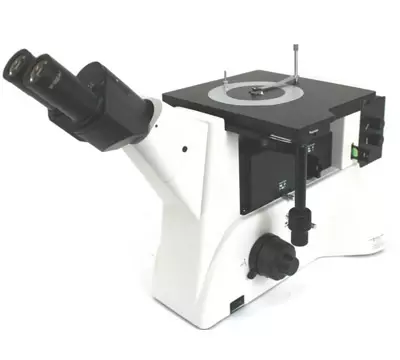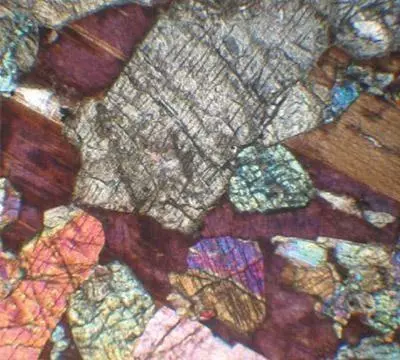Metallographic Microscopes
The primary purpose of Microscopic Examination is to reveal details of metal structures, which are too small to be seen under the unaided eye. Metallurgical microscopes can be used to determine grain size, inclusions, previous heat treatment, possible causes for failures, deformation, and inter-granular corrosion. In short, Microscopic Examination can reveal a great deal about the past history of a metal specimen, and how it will act in service.
Metallurgical microscopes (also known as materials microscopes) are equipped with an incident light source (also called reflected) which sends the light through the objective onto the reflective surface of the metal. The sample has to be perfectly flat and is usually polished, a 'micro' specimen will normally have been prepared of the metal, composite, ceramic or polymer sample using equipment available within our Materialographic Division. This type of microscope can sometimes also be used to look at particles trapped on filters. Click here for more info about Metallurgical Microscopes
Our range of cameras for microscopy provide high levels of functionality at excellent prices are have been specially designed for microscopy use. Cameras can be connected via USB to your computer or can be connected direct to a display monitor and many of these have on-board SD card slots for computer-free image capture.
We are also able to offer all levels of software from basic image capture (usually free with the camera) to advanced automated image analysis for particle sizing and metallurgical analysis (eg grain size, inclusion counts, porosity etc).
Cameras can be connected to any microscope, we have a very wide range of camera adapters suitable for almost every type of microscope ever made. We have particular expertise in this field.
In all phases of microscopy, cleanliness is essential especially when it comes to optical parts. Lenses should be maintained free from fingerprints, dust and oil films. High quality lenses are usually coated with an extremely thin film to reduce light loss from reflection. Acid from a fingerprint can etch through the film and spoil the lens. Oil used with an oil immersion lens should be removed immediately after use and not allowed to dry on the lens.




